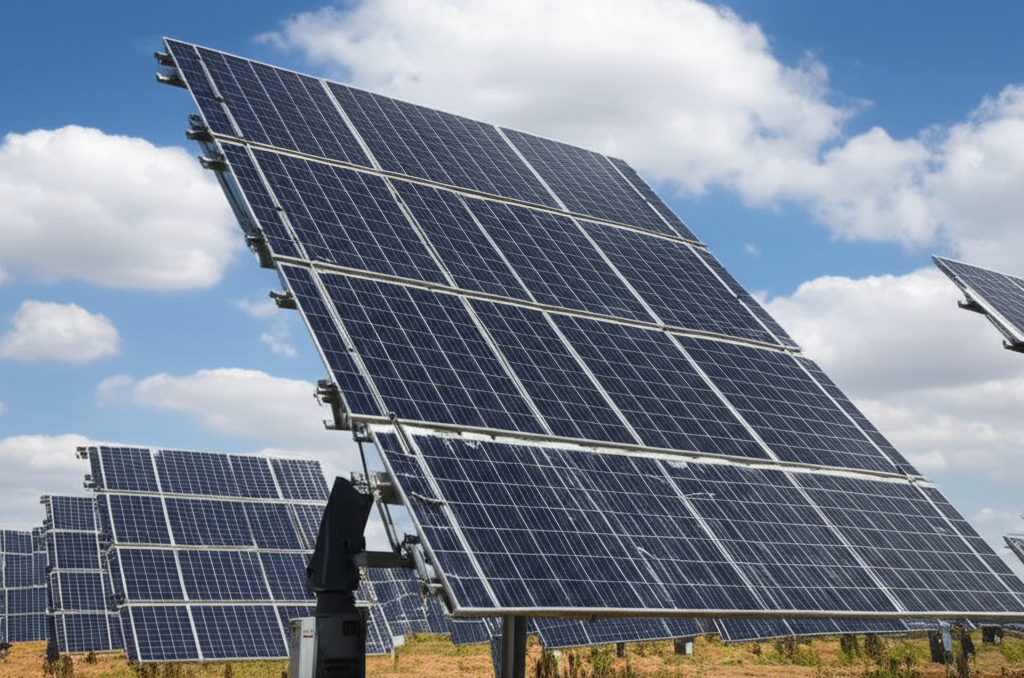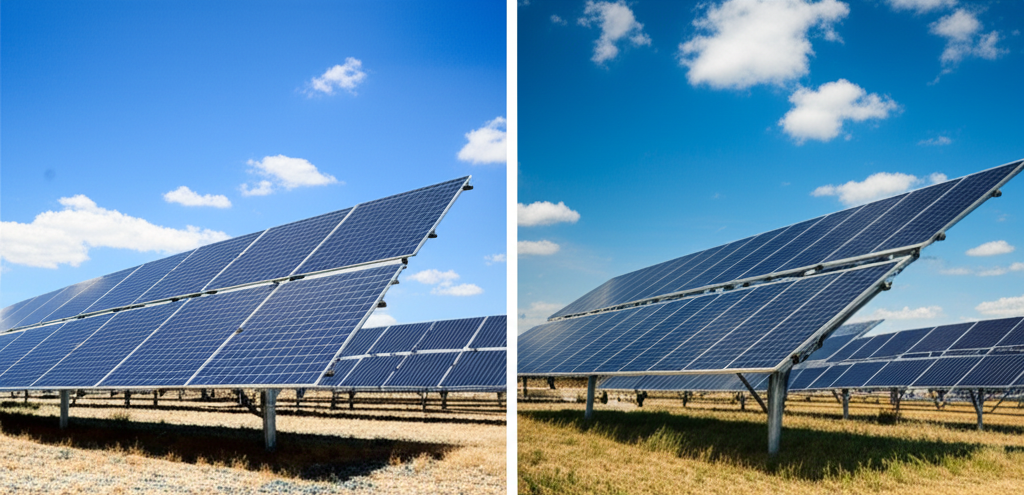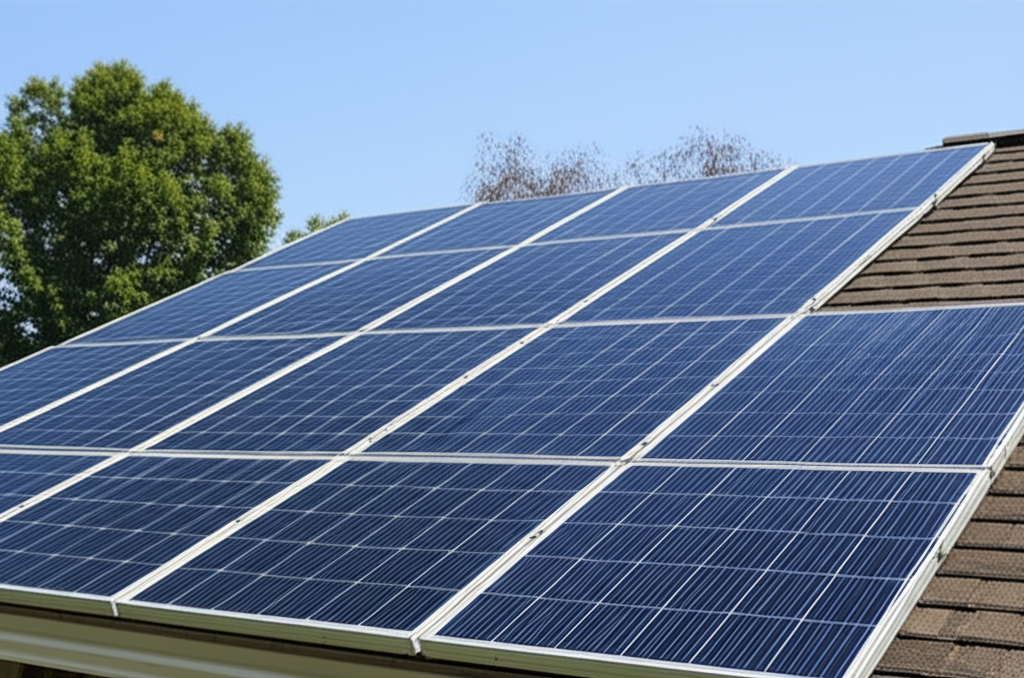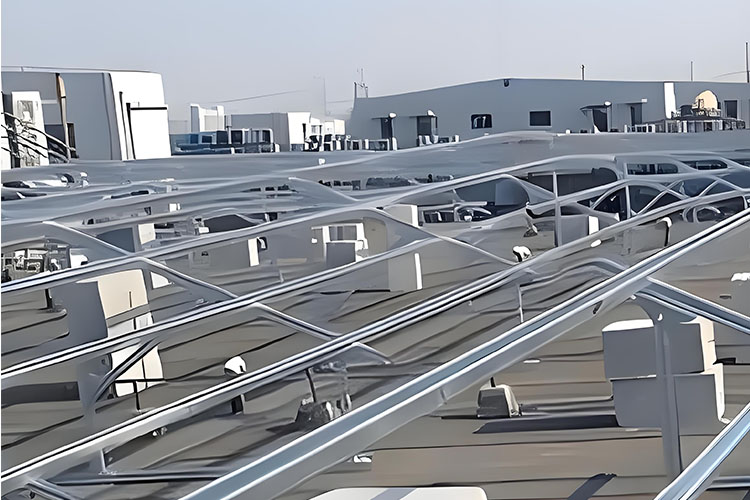Vous souhaitez obtenir un rendement prévisible de vos installations solaires. Vous voulez également moins de frustrations en matière d'exploitation et de maintenance. Les suiveurs peuvent apparaître comme un composant mobile de plus. Ils peuvent sembler dangereux. Voici la vérité. Les suiveurs modernes augmentent le rendement énergétique, réduisent le coût total de possession et diminuent les frais d'exploitation et de maintenance pendant toute la durée de vie de l'installation, à condition de choisir le système approprié et de l'utiliser avec maîtrise.
Comprendre le suivi solaire : comment ça marche et pourquoi c'est important
Les systèmes de suivi solaire orientent les composants photovoltaïques vers le soleil tout au long de la journée. Les suiveurs à axe unique tournent sur un seul axe. Les suiveurs à deux axes suivent l'azimut et l'altitude. Les contrôleurs utilisent des formules astronomiques et les commentaires des unités de détection pour positionner les composants de manière à obtenir une irradiation optimale. Un excellent suivi réduit l'ombrage, améliore la capture de la lumière diffuse et prend en charge l'arrimage au vent pour protéger la variété en cas de tempête.

Qu'est-ce que cela signifie pour le rendement ? Des études indépendantes montrent que les suiveurs à axe unique augmentent généralement l'énergie d'environ 15 à 25% par rapport à l'inclinaison réparée. Les systèmes à deux axes peuvent atteindre 25 à 35% en fonction de la latitude et de la disposition. Associez les suiveurs à des composants bifaciaux et vous pouvez obtenir 5 à 15% supplémentaires grâce au gain arrière avec l'albédo du sol approprié. Les kilowattheures supplémentaires par watt monté réduisent le LCOE dans les tâches de service public d'environ 5 à 10% lorsque le site et la conception sont optimisés.
SolPath, de Jinwu Xuanhui Technology Co, Ltd, conçoit des systèmes de suivi intelligents qui mettent ces gains à portée de main. Vous bénéficiez d'un suivi résistant à l'ombre qui réduit l'ombrage d'une rangée à l'autre. Vous obtenez une mise en service à distance et des mises à jour OTA (over-the-air) qui réduisent les prix. Vous obtenez des contrôleurs, des actionneurs et un placement provenant d'une seule chaîne d'approvisionnement pour une livraison plus rapide et une assimilation moins complexe.
Mythe 1 : “Les traceurs sont trop chers pour justifier un retour sur investissement”.”
Les dépenses d'investissement sont terrifiantes. On respecte le retour sur investissement. Pourtant, le retour sur investissement repose sur la récolte d'énergie tout au long de la vie et sur le coût global de possession.
- Le suivi sur un seul axe comprend une puissance de 15 à 25% contre une inclinaison en plusieurs endroits - Le suivi sur deux axes peut fournir 25 à 35% dans les meilleures conditions - Le suivi optimisé réduit le LCOE d'environ 5 à 10% dans les projets à l'échelle des services publics.
Où cela se traduit-il ? Les latitudes moyennes avec un DNI élevé. Sites web avec des vents et une géotechnique favorables. Les tâches qui génèrent un revenu pour chaque kWh supplémentaire par le biais de contrats d'achat d'électricité ou de marchés marchands. Les composants bifaciaux sur les suiveurs peuvent améliorer le gain arrière pour une économie d'entreprise plus puissante.
Aperçu du ROI : Fixe vs suivi (à titre indicatif)
| Scénario (100 MWdc) | Gain d'énergie par rapport à l'énergie fixe | LCOE estimé Delta | Fenêtre de récupération indicative |
|---|---|---|---|
| Bascule fixe Baseline | — | — | — |
| Traceur à axe unique | +15–25% | -5-8% | 4-7 ans |
| Traceur à deux axes | +25–35% | -8-10% | 5-8 ans |
Les chiffres indiquent les variétés de marché selon des normes indépendantes Votre site détermine les chiffres définitifs.
La valeur de SolPath est supérieure à celle de l'acier et des moteurs. Les algorithmes résistants à l'ombre réduisent les pertes dues à l'inadéquation. La nomination à distance réduit le temps de montage. Les mises à jour OTA vous permettent de répercuter les améliorations d'efficacité sur l'ensemble de la flotte sans déplacement de camion. Cette combinaison augmente le rendement et réduit les frais généraux, ce qui diminue les remboursements.
Mesures à prendre :

- Modéliser le rendement à l'aide de données TMY spécifiques au lieu et inclure des hypothèses sur la face arrière biface.
- Exécuter le LCOE avec des coûts d'exploitation et de maintenance raisonnables et une stratégie supplémentaire.
- Valider la conception de la structure et de l'arrimage au vent par rapport aux codes du voisinage et aux comptes de rafales.
Si le contrôle des prix est votre principale priorité, explorez les services de SolPath. Suivi des coûts des alternatives pour les mises en œuvre présentées.
Mythe 2 : “Les traceurs tombent fréquemment en panne et nécessitent un entretien régulier”.”
Les anciens systèmes se battaient. Ce n'est pas le cas des suiveurs modernes. Les données du marché révèlent que les dépenses annuelles de maintenance des suiveurs actuels restent généralement inférieures à 1% du coût d'investissement initial lorsque l'on utilise la maintenance prédictive et les contrôles intelligents.
Les trackers SolPath utilisent les commentaires en boucle fermée et le positionnement astronomique. Les systèmes s'arrêtent en cas de vents violents pour protéger les structures. Les modes de déneigement et les régimes anti-ombre améliorent l'accessibilité dans les climats difficiles. La surveillance à distance signale rapidement les dérogations. Les mises à jour OTA du micrologiciel apportent des solutions et des attributs sans intervention sur site.
Profil O&M : Fixe vs suivi (fourchettes typiques)
| System Type | Fonctionnement et entretien annuels comme % du capital investi | L'accent mis sur la maintenance |
|---|---|---|
| Fixed Tilt | ~0,5-1,0% | Nettoyage des modules et électricité |
| Axe unique | ~0,8-1,0% | Lubrification, vérifications de l'entraînement, microprogrammes |
| Deux axes | ~1.0-1.2% | Inspections supplémentaires des joints et étalonnage |
Les variétés correspondent aux normes du marché et peuvent varier en fonction du site web et de la technique.
Les meilleures méthodes pour maintenir un temps de disponibilité élevé :
- Utilisez une lubrification basée sur l'état plutôt que sur des calendriers préétablis.
- Tendez les courants du moteur et les erreurs de placement pour détecter l'usure à un stade précoce.
- Valider les séries d'arrimage au vent et de guérison à chaque période.
- Normaliser les kits supplémentaires pour les actionneurs et les contrôleurs.
Vous souhaitez une stratégie d'entretien structurée ? Voir le site de SolPath Installation et maintenance pour les listes et les points.

Mythe 3 : “Le suivi n'améliore pratiquement pas l'énergie, la fixation est donc suffisante”.”
L'inclinaison réparée peut être utile à certains sites. Dans de nombreux domaines, le suivi des victoires est une évidence.
- Axe unique : +15 - 25% d'énergie par rapport à l'inclinaison prise en charge - Deux axes : +25 - 35% d'énergie par rapport à l'inclinaison traitée - Biface + axe unique : +5 - 15% supplémentaires en fonction de l'albédo et de l'espacement entre les rangs.
L'emplacement est important. Les latitudes réduites et les ciels clairs favorisent le suivi. Les environnements diffus sont toujours bénéfiques, car les contrôleurs peuvent optimiser l'étalement de la lumière. Un bon espacement des rangs et le suivi résistant à l'ombre de SolPath réduisent l'ombrage entre les rangs, ce qui vous permet de récolter beaucoup plus tôt le matin et en fin de journée.
Gain énergétique par approche (références industrielles)
| Approche | Gain d'énergie par rapport à l'inclinaison fixe |
|---|---|
| Fixed Tilt | — |
| Suivi d'un seul axe | +15–25% |
| Suivi à deux axes | +25–35% |
| Axe unique + biface | +20-40% total vs fixe (combiné) |
Données compilées à partir d'enregistrements indépendants Les problèmes de contrôle du site Web ont permis de réaliser des gains.
Si le rendement est votre étoile polaire, explorez le site de SolPath. Tracker intelligent des choix qui permettent d'ajuster les angles pour une lumière diffuse et un gain sur la face arrière.
Mythe 4 : “Les suiveurs sont réservés aux grands projets d'utilité publique”.”
Les projets des services publics sont les premiers à être adoptés. C'est vrai. Les applications de plus petite taille peuvent en bénéficier lorsque les problèmes s'y prêtent.
- Toitures commerciales avec des portées libres et des possibilités architecturales.
- Sites commerciaux au sol derrière le compteur avec tarifs en fonction de la durée d'utilisation.
- Des systèmes agricoles et hors réseau qui récompensent les rendements de l'après-midi.
SolPath propose des modèles évolutifs pour la production dispersée et des utilisations de niche particulières. Consultez le site Suivi commercial services si votre site web dispose d'une surface au sol. Découvrir Suivi agricole pour les ranchs qui ont besoin de plus de puissance pendant les heures creuses. Pour la résilience des sites distants, il faut envisager Suivi hors réseau.
L'adéquation du site est toujours un critère de choix. Il faut des problèmes adéquats, peu d'ombrage, un programme éolien approprié et des structures rentables. Si ces conditions sont remplies, vous pouvez justifier un suivi en dehors de l'échelle des services publics.
Mythe 5 : “Les traqueurs ne sont pas respectueux de l'environnement et gaspillent des sources”.”
Les suiveurs ajoutent de l'acier et des contrôles. Ils augmentent en outre l'énergie par acre, ce qui réduit l'empreinte foncière par kWh fourni. Un rendement plus élevé réduit le LCOE de l'emploi. Cette baisse réduit les émissions du cycle de vie par kWh car les impacts de la fabrication se répartissent sur un plus grand nombre de générations Les composants bifaciaux augmentent la récolte arrière sans composants actifs supplémentaires
Les configurations SolPath garantissent une longévité et une durée de vie accrues. Les contrôleurs reçoivent des mises à jour OTA qui prolongent les capacités sans changement d'équipement. Le suivi résistant aux ombres minimise les inégalités, ce qui permet de maintenir les modules en fonctionnement plus près l'un de l'autre. Cela se traduit par une meilleure capture de l'énergie au fil des décennies.
Si le développement durable est au cœur de votre programme, consultez le site SolPath's Suivi écologique approche des produits et du raisonnement sur le cycle de vie.
Choisir le bon système de suivi solaire
Votre choix détermine le retour sur investissement et le risque. Commencez par les besoins du site et de l'organisation.
- L'emplacement et la latitude déterminent les gains de puissance.
- Les charges de vent et de neige influencent l'agencement architectural et le raisonnement des magasins.
- Le sol et la géotechnique déterminent le prix de la structure.
- L'interconnexion et le SCADA spécifient le travail d'assimilation.
- L'approche bifaciale influence l'espacement des rangs et les traitements d'albédo.
- Cibler le suivi là où les conditions de latitude et de ciel permettent un retour significatif.
- Associez les suiveurs à des composants bifaciaux pour obtenir de l'énergie supplémentaire en cas de problèmes de sol appropriés.
- Concevoir avec soin l'arrimage au vent et examiner les séries de récupération afin de préserver le temps de fonctionnement.
- Utilisez la mise en service à distance et les mises à jour OTA pour minimiser les coûts indirects et améliorer l'efficacité au fil du temps.
- Budget O&M égal ou inférieur à 1% de capex avec maintenance prédictive et pièces de rechange standard
- Les suiveurs solaires fonctionnent-ils par temps maussade ?.
- Quel est le coût d'un système de traçage solaire ?.
- Quelle est la durée de vie d'un suiveur solaire ?.
- Puis-je ajouter un suiveur solaire à des panneaux solaires existants ?.
- Demander une évaluation du rendement et du LCOE spécifique au site pour un axe unique par rapport à un axe pris en charge ou à un axe double.
- Valider les problèmes géotechniques et éoliens avant de bloquer la conception architecturale.
- Planifiez votre programme O&M avec une maintenance basée sur l'état et des mises à jour OTA dès le premier jour.
- Les suiveurs modernes fonctionnent de manière fiable dans des conditions météorologiques difficiles grâce à des réglages de protection contre le vent et la neige. La surveillance à distance et les mises à jour OTA réduisent les interventions manuelles et les frais généraux de maintenance. Les gains sur deux axes peuvent atteindre 20 - 40% dans des conditions favorables et les gains sur un seul axe sont généralement de 15 - 30%, d'après la documentation de l'article et les études de l'industrie. Les systèmes SolPath permettent un suivi intelligent résistant aux ombres, une nomination à distance et une couverture complète de la chaîne d'approvisionnement pour les suiveurs, les contrôleurs et le montage.
Comparaison rapide : Axe simple ou double
| Fonctionnalité | Axe unique | Deux axes |
|---|---|---|
| Yield Gain vs Fixed | +15–25% | +25–35% |
| CAPEX | Inférieur | Higher |
| O&M Complexity | Inférieur | Higher |
| Meilleure adaptation | Services publics et grandes entreprises C&I | Sites spécialisés ou niches à forte valeur ajoutée |
| Bifacial Synergy | Fort | Fort |
SolPath assure une livraison de bout en bout. Vous obtenez les suiveurs, les contrôleurs et l'installation en un seul programme. Les solutions s'intègrent aux modules PV et aux onduleurs courants. Les contrôleurs permettent une mise en service à distance et des mises à jour OTA qui réduisent la main d'œuvre et accélèrent la mise sous tension. Pour l'échelle, lisez à propos de Suivi de l'échelle des services publics les remèdes. Pour les choix au niveau des composants, explorer Composants du tracker.
Conseils pratiques
Oui. Les contrôleurs utilisent des algorithmes coûteux pour tenir compte de la lumière diffusée. Le fait que la gamme conserve un angle optimal par rapport à l'irradiation diffusée reste un avantage.
Les coûts varient en fonction du site et du choix de la structure. L'axe unique ajoute généralement peu d'investissements par rapport à l'inclinaison réparée tout en améliorant l'énergie de 15 à 25%, ce qui réduit souvent le LCOE de 5 à 8% dans les tâches de service public.
La durée de vie de l'agencement correspond souvent à celle des modules photovoltaïques dans une fourchette de 20 à 25 ans. Les actionneurs et les contrôleurs suivent des cycles de remplacement organisés. La maintenance prédictive prolonge les intervalles entre les solutions et réduit les temps d'arrêt.
Il est possible d'installer le système sur des sites au sol si les structures et les espaces libres le permettent. L'assimilation avec les onduleurs et le SCADA existants est simple lorsque vous utilisez des interfaces utilisateur communes. Une analyse du site permet de vérifier la faisabilité et les coûts.

Prochaines étapes
Tout est prêt pour voir comment le suivi modifie vos chiffres.
Découvrez les services de SolPath Suivi de l'échelle des services publics et de l'échéancier. Vous pouvez aussi commencer par un parcours économique grâce à notre Suivi des coûts. Lorsque vous avez besoin d'une installation en douceur et d'une réduction des dépenses tout au long de la durée de vie, plongez-vous dans l'univers de l'eau et de la santé. Installation et maintenance.
Références
Grand View Research. Rapport d'analyse sur la taille, les parts et les tendances du marché des suiveurs solaires. Janvier 2024.
Fraunhofer ISE. Performances actuelles et futures des modules et systèmes photovoltaïques. Janvier 2024.
BloombergNEF. Coût nivelé de l'électricité en 2023.
Wood Mackenzie. Marché mondial des suiveurs solaires photovoltaïques : parts de marché et expéditions H1 2023.
NREL. PV biface avec suivi : Enhanced Energy Yields. Avril 2023.
Notes de vérification.